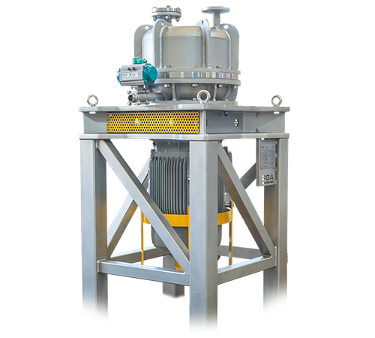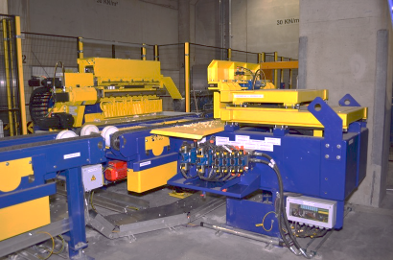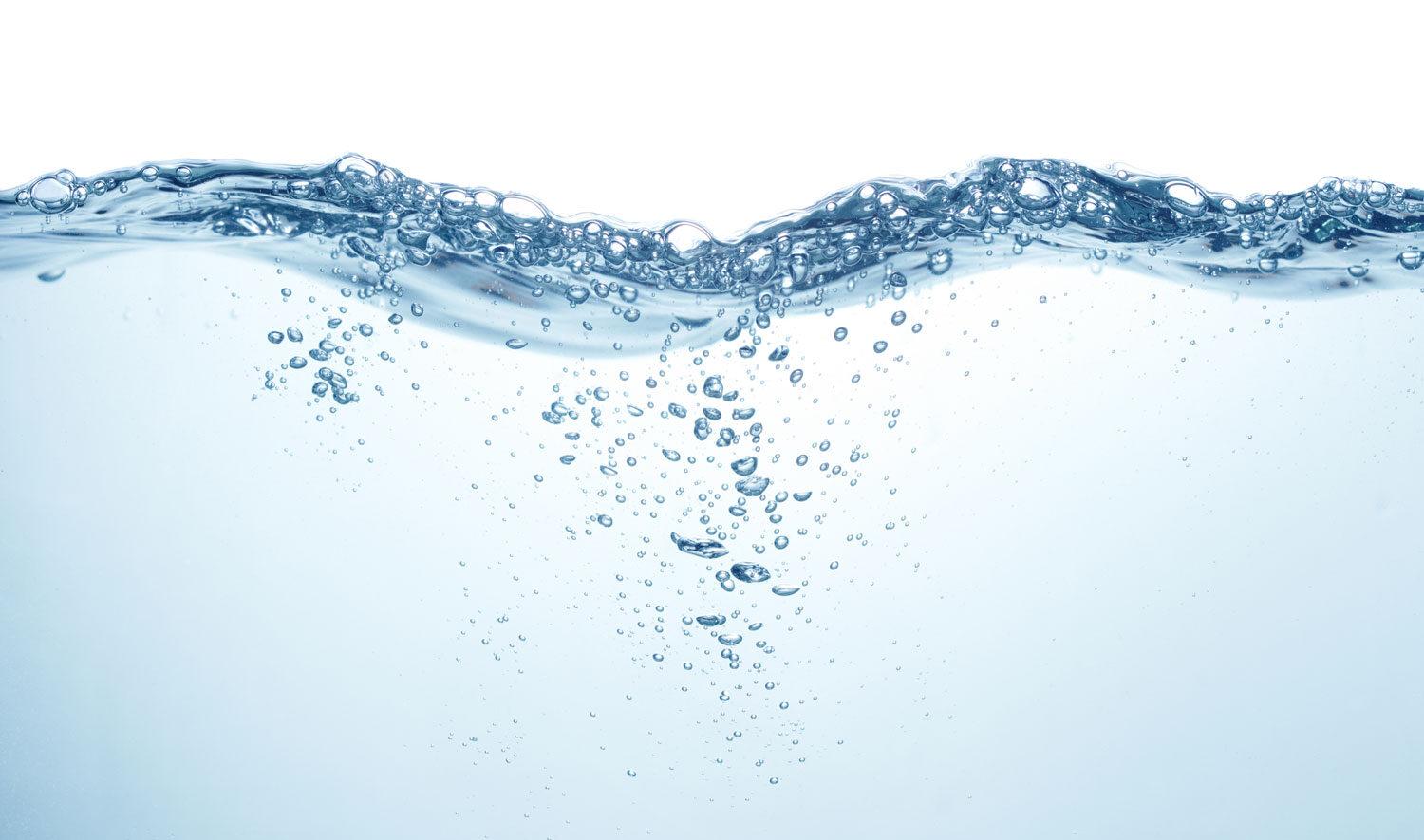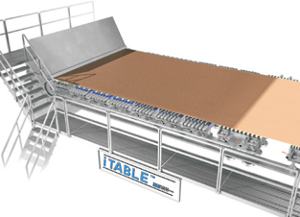- Products
-
Paper and board
- Water treatment
- Wood and chip yard
- Pulp making
- Pitch control
- Defoamers
- Press fabrics
- Detergents
- Strength enhancers (Biopolymer)
- Additives for wet strength broke pulping
- Additives for fiber modification
- Additives for peroxide bleaching
- Magnesium hydroxide
- Enzymes
- Organic Deposit Control
- Inorganic Deposit Control
- Edge showers
- Adjustable shower pipes
- Scanjet tank cleaners
- iFibre
- Starch Performer starch cooker
- Screw presses
- Double wire presses
- Disc filters
- Bale handling systems
- Baler wires
- Wire section
- Defoamers
- Dewatering elements, ceramics and PE
- iTable and dewatering elements optimization
- Dewatering elements
- Fabric tensioning
- Doctors, oscillating and shower systems
- SuperSteamVac steam box
- Edge trimming and tail cutter, ruby nozzles
- Edge showers and edge trimming
- Vacuum control valves
- Fabric cleaning and conditioning
- Slime control
- Banform SSB wires
- Online monitoring and controlling – Online-PDC
- Online monitoring and controlling – Flowmaster
- TableVision – Activity Vision
- TableVision – Jet Vision
- TableVision -Line Vision
- TableVision – FlocVision
- Fabric Guides
- Retention agents
- Press section
- Drying
- Air flotation dryers and air turn solutions
- Fabric cleaning agents
- Degreasers
- Yankee roll release agents
- Bandry woven dryer fabrics
- Bandry PPS hydrolysis resistant dryer fabrics
- Bandry fabrics for broke conveyor
- Electric Infra-Red dryers – DryMaster™
- Electrical IR wet edge dryers – EdgeMaster™
- Gas IR and air drying systems – UniDryer®
- Energy recovery systems
- Gas IR dryers – GemDryer®
- Air dryers – FoilMaster™
- Coating
- Reeler and finishing
- Monitoring
-
Chemical pulping
- Water treatment
- Wood and chip yard
- Fiber line
- Drying
- Pitch control
- Defoamers
- Adjustable shower pipes
- Dewatering elements, ceramics and PE
- Fabric tensioning
- Doctors, oscillating and shower systems
- SuperSteamVac steam box
- Edge trimming and tail cutter, ruby nozzles
- Edge showers and edge trimming
- Vacuum control valves
- Online monitoring and controlling – Online-PDC
- Online monitoring and controlling – Flowmaster
- Fabric Guides
- Safetymaster
- Strength enhancers (Biopolymer)
- Dewatering elements optimization
- Microbiological control
- Cylinder protection agent
- Forming fabrics
- Baler wires
- Recovery
- Condition monitoring
- Mechanical forest industry
- Biomaterials
- Green transition sectors
- Electrification and energy solutions
- Biogas and biofuels
- Petrochemicals
- Mining industry
- Metal industry
-
Paper and board
-
Partners
- Acrowood
- AstenJohnson Advanced Fabrics
- Bellmer
- BERGER
- Bollfilter
- Broadwire
- Buckau-Wolf GmbH
- CERNEY
- Eaton
- ECOWORLD
- FMW Industries
- GIG Karasek
- HeatHamster
- Herco
- Horst Sprenger
- IBS Austria GmbH
- Ichikawa
- Innocode
- Ircon Solaronics
- James Ross
- JTR ROLLS
- JUD AG
- Kapotek
- KOHO
- LMF
- MAAG Group
- Meidinger AG
- Papertech
- PGA
- Pieralisi
- Pirobloc
- PMS
- Renk Group
- Scanjet Systems
- Schaumann Bioenergy
- sera Group
- Spooner Industries Limited
- Teufelberger
- Transphase
- UMV Coating Systems
- Vakuo
- Sustainability
- Company
- Contact us
Case studies

Bulk Starch
Raw Material Switch in Bulk Starch
Raw material was switched from potato starch to corn starch.
Savings in the project implemented by IBS PPG: €1.1 million per year.
- Conversion from potato starch to corn starch using a new Starchperformer starch cooker
- Up to 70% savings in steam consumption due to a significantly higher cooking yield
- The same or even better quality of the cooked starch
- Payback period within a few months

Stora Enso commissions FMW Industries to supply complete, fully automated bale handling systems
Stora Enso commissions FMW Industries to supply complete, fully automated bale handling systems for the largest board machine in Europe (Oulu, Finland).
Stora Enso is converting its existing paper machine at the Oulu site from coated graphic papers to the production of high-quality coated primary fiber-based board. With a planned production volume of 750,000 tons per year, the plant will be one of the largest of its kind in Europe.
FMW will supply the northern Finnish customer with four fully automatic pulper feeding lines with a total capacity of 2,700 tons of “virgin fiber bales” per day. Three production lines are designed for processing so-called „jumbo bales“ with a total capacity of 123 bales per hour. The fourth line is directed for the preparation and processing of so-called „export bales“ (market pulp). This can be adapted for a capacity of 220 bales per hour in the future.
In order to make the recycling of the wire coils from the eight dewiring machines as efficient as possible, they are collected by a fully automatic magnetic conveyor belt system and transported to a collection container.
„We are very pleased that Stora Enso has once again chosen our solution. The order further expands our existing partnership and reinforces the successful commissioning of a similar plant in 2022,“ said Managing Director for Sales and After Sales and Services Martin Größ from FMW. With its own developed process technology and automation based on the know-how of more than 150 references worldwide, FMW stands out especially for innovation, quality and flexibility. “For FMW it’s another important step to further strengthen its market position for pulp bale handling systems.”, says Managing Partner Felix Sorger.
About the customer Stora Enso
Stora Enso is a leading supplier of renewable products in packaging, biomaterials, wooden construction and paper and one of the largest private forest owners in the world. Stora Enso’s strategy is that everything made from fossil materials today can be made from a tree tomorrow. Stora Enso employs about 22,000 people and had sales of 10.2 billion euros in 2021.

Slime control
35% Lower Biocide Costs and Minimized Paper Defects
Efficient and sustainable water treatment is critical for maintaining smooth operations in paper and board manufacturing. A leading paper manufacturer faced persistent issues with high microbial activity and slime growth, which directly impacted product quality and the working environment. The solution came in the form of Bansan SCD, an innovative biocide known for its stable and effective chlorine dioxide technology.
Problem
The paper manufacturer encountered the following operational challenges in their production process:
- Excessive biocide consumption to control microbial growth
- Frequent defects such as holes in paper, compromising product quality
- Increased potential for microbial growth due to water system demands
- Noticeable biocide odor impacting the production environment due to high dosage levels
These issues not only led to inefficiencies but also increased overall operational costs.
Solution
To address these challenges, the paper manufacturer adopted Bansan SCD as a comprehensive slime control solution. Key steps included:
- Integration of Bansan SCD as a single-component system for controlling slime formation
- Application across short and long circulation systems to ensure broad-spectrum microbial control
- Optimization of free chlorine levels to maintain system cleanliness while controlling costs
- Complete replacement of DBNPA, resulting in a streamlined and effective treatment process
The implementation of Bansan SCD was seamless, utilizing existing dosing infrastructure with minor adjustments.
Results
The adoption of Bansan SCD delivered measurable improvements:
- Reduction in biocide dosing requirements by 67–74%, minimizing chemical consumption costs
- Achieved stable chlorine levels within the system, effectively inhibiting microbial regrowth
- Eliminated biocide odors, ensuring a cleaner and more comfortable production environment
- Significant improvement in paper quality, reducing defects such as holes caused by microbial activity
- Enhanced operational efficiency, lowering microbiological contamination to target levels
Additionally, the customer was able to cut down biocide costs by 35% on a yearly basis, leading to substantial financial savings. This reduction highlights the effectiveness of optimized biocide dosing and improved system performance
Benefits
Bansan SCD brought significant advantages to the manufacturer:
- Cost Efficiency: Reduced biocide consumption led to annual cost savings
- Optimized Performance: Improved microbiological control, preventing contamination risks and maintaining system stability
- Environmental Benefits: Lower chemical usage aligns with sustainability targets while maintaining high efficiency
- Improved Workplace Conditions: Elimination of odors created a better production environment for workers
The transition to Bansan SCD demonstrates how advanced water treatment technologies can provide benefits in demanding industrial environments. Bansan SCD not only resolved critical operational challenges but also set a new standard for cost-effective and sustainable slime control.

Bulk Starch
Bulk Starch Consumption Reduced by 12%
Savings in the project implemented by IBS PPG: €540,000 per year
- Bulk starch usage reduced by 12%
- Improved formation with iTable
- The same or even better product quality
- Payback period within a few months

Cleaning projects for processes containing odor-causing or flammable components
Especially in side streams but also in main processes, there can be concentrations of odor-causing or flammable components that require carefully selected cleaning methods for their removal and control. Proper cleaning methods increase odor control and are essential for safety.
Side stream processes in the forest industry, such as pulp production, involve odorous and flammable components. These components include methanol, turpentine, and odorous sulfur compounds. These components are present in various process streams but cleaning them in the most concentrated streams requires special expertise.
The need to clean a process line or unit may be related to maintenance work or inspections. It is essential to ensure that the planned work can be carried out in a safe and properly cleaned environment.
The use of steam is recommended in many cases, but it is not always possible. On the other hand, the use of steam alone is not always sufficient. In such cases, cleaning can be enhanced by adding chemicals to the steam or by using liquid chemical cleaning.
Banmark has delivered cleaning projects for challenging side stream processes.
We support our customers from the very beginning. Planning includes analytics and selecting the appropriate cleaning method, including dosing systems and chemistry. We also have expertise in designing and coordinating complex projects to fit our customers’ overall schedules. We tailor the appropriate cleaning method to meet our customers’ needs

Detergents
Maximized Throughput In DD-Washer Cleaning
The DD-Washer plays a pivotal role in the pulp manufacturing process, ensuring efficient washing and water removal during fiber processing. However, scaling and deposits, such as barium sulfate (BaSO4), can severely impact its functionality, resulting in operational inefficiencies.
Problem
The DD-Washer experienced significant scaling within its filtrate channels, leading to restricted flow rates, reduced washing efficiency, and lower throughput. The resulting production losses and heightened risk of equipment failure created recurring operational challenges.
Solution
- Implemented intensive cleaning procedures using a combination of high-strength acid solutions and complexing agents to dissolve BaSO4 deposits
- Conducted combinatory pre- and post-washer cleaning protocols twice a year to maintain performance
- Adjusted chemical formulations to align with specific scaling challenges in the system
Results
- Successfully restored the DD-Washer’s operating efficiency with deposits nearly eliminated
- Improved throughput capabilities and water removal efficiency
- Reduced the risk of equipment damage from scale-induced stress
Benefits
- Optimized System Performance: Reclaimed washer efficiency ensured smooth operation.
- Cost Savings: Preventative cleaning eliminated the need for costly unplanned downtime
- Improved Longevity: Prolonged the lifespan of washer components through consistent maintenance
- Sustainability: Improved washing efficiency led to lower energy and water consumption during operation

Detergents
Improved Efficiency with Short Circulation Cleaning
Maintaining clean industrial processes is vital for efficiency and product quality, especially in the pulp and paper industry. Short circulation cleaning is a targeted approach for quickly addressing contamination buildup, ensuring smooth operations and consistent output.
Problem
Contaminants such as resin and extractives commonly accumulate within short circulation systems over time. These deposits can lead to mid-cycle process interruptions, defects in the final product, and machine performance issues. Frequent stoppages caused by dirt flushes from headboxes further decrease profitability by disrupting workflows.
Solution
- Performed comprehensive monthly base cleanings with specially developed industrial detergents
- Introduced two annual intensive cleaning cycles using powerful cleaners tailored to dissolve organic and inorganic deposits
- Customized cleaning protocols based on the specific types of contaminants
Results
- Achieved consistent product quality with minimal contamination-related defects
- Extended machine operating cycles without interruptions due to resin and extractive buildup
- Enhanced operational predictability and reduced unscheduled downtime through carefully scheduled cleaning cycles
Benefits
- Consistent Production: Regular cleaning stabilized process performance across cycles
- Higher Uptime: Reduced downtime thanks to effective impurity control
- Better Quality Output: Improved product appearance and structural quality due to reduced contamination
- Cost Efficiency: Lower maintenance expenses and extended equipment lifespan ensured cost-effective production

Bulk Starch
Effective Starch System Cleaning
Starch systems are essential in the paper manufacturing process, especially for enhancing strength and surface properties. However, their performance can be undermined by the accumulation of deposits during operation unless proper cleaning protocols are in place.
Problem
Starch lines were frequently plagued by clogs, inconsistent starch dispersion, and decreased ASA-stability due to a mixture of organic residues and inorganic scaling. This caused frequent machine breaks and product inconsistency, leading to both operational inefficiencies and customer dissatisfaction.
Solution
- Initiated an intensive cleaning regime with Banmark’s CR-500 cleaner, targeting both organic and inorganic residues
- Planned periodic cleaning schedules, beginning with a concentrated cleaning phase followed by biannual maintenance cleaning
- Improved homogenization by addressing material buildup in the starch preparation and delivery systems
Results
- Fully cleaned starch systems with restored consistency in dispersion
- Eliminated ASA issues related to stability, improving coating performance
- Drastically reduced operational interruptions caused by starch-related equipment failures
Benefits
- Enhanced Production Flow: Reliable starch lines improved operational stability
- Quality Improvements: Consistency in starch application enhanced paper strength and overall quality
- Reduced Maintenance Costs: Effective cleaning reduced the need for frequent manual intervention and repairs
- Extended Equipment Lifespan: Decreased wear and tear on starch system components

BeSmart: Higher condensate production – Lower costs
Maintaining efficient operations in mechanical pulp production involves overcoming significant challenges, particularly those related to scaling and inorganic deposits. High calcium and sulfate deposit formation in evaporation units, combined with reduced condensate production and increased cleaning costs, strain operational performance and water balance within mills. Through advanced and collaborative solutions, significant improvements can be achieved in minimizing these challenges.
Problem
Mechanical pulp production plants facing recurring issues of:
- High formation of inorganic deposits, particularly calcium and sulfate, within evaporation plant units
- Reduced efficiency in condensate production
- Increased fouling potential, leading to costly and frequent cleaning efforts
- Difficulties in maintaining optimal water balance across the mill processes
These conditions elevate operational costs and disrupt mill efficiency, necessitating proactive remediation.
Solution
A comprehensive solution was developed by integrating targeted inorganic deposit control with cutting-edge tools and expertise across multiple domains:
- Custom Chemical Solutions: Precise chemical treatments tailored to reduce deposit formation and scaling
- Advanced Analytics and Modelling: Real-time system evaluations powered by data analysis and predictive algorithms to forecast future behaviour
- Collaborative Expertise: Combining knowledge in chemistry, analytics, modelling, and process optimization to deliver a synchronized approach
Results
Implementing these solutions led to measurable and impactful outcomes:
- Condensate production increased by 5%
- Cleaning and detergent costs were reduced by 13%
- Condensate output became 20% more efficient relative to cleaning chemical consumption
- Process behaviour became easier to predict, enabling proactive system optimization
Benefits
The results translated into multiple tangible benefits for pulp mills:
- Enhanced Efficiency: Improved condensate production and reduced fouling ensure smoother operations
- Cost Optimization: Savings in cleaning and chemical expenditure lower operational costs
- Confidence in Planning: Predictive insights enable mills to anticipate and mitigate future challenges effectively
- Sustainability Gains: Reduced chemical consumption and enhanced water balance positively impact environmental goals
By leveraging these advanced solutions, mills can create sustainable, cost-effective systems while achieving greater operational reliability